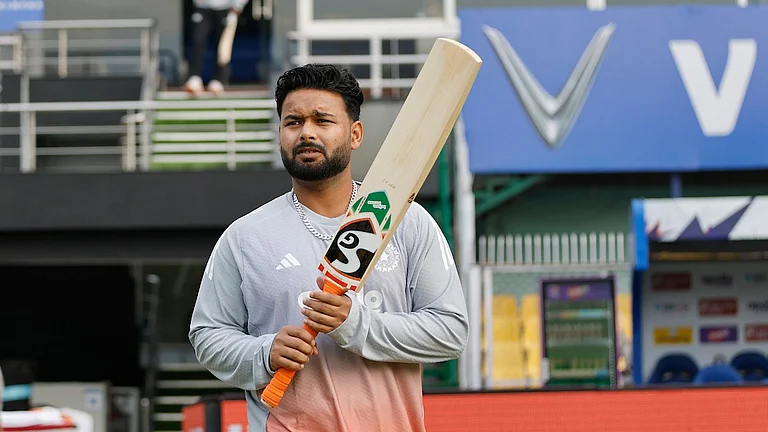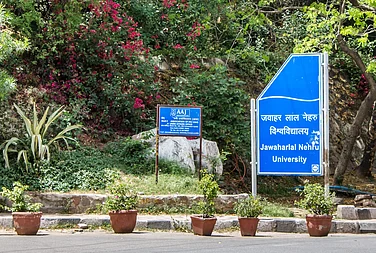Caught in an ugly political slugfest, Assam chief minister Himanta Biswa Sarma grandiloquently pronounces: “…India is not just a union of States but Bharat is our Mata…” A definite statement that India was neither a federation nor a concord of partnership between the Centre and the States but an arrangement of overlordship, replete with subordination of all the diversities and differences to an overarching centre of authority. Sarma is a recent addition to the BJP’s political stable. With all the fervour and conviction of a neo-convert, the Assam chief minister righteously believes that our constitutional scheme can be molded and mended to suit the ruling party’s political convenience.
India, that is Bharat, is also a democratic empire. The demands of operating an empire are often in clash with the imperatives and chaos of a democratic arrangement. Reconciling the two sets of urgencies is the crux of statecraft in India. Reconciliation is never easy, though. So, let us step back a bit. “..this choking over-centralisation of power..” This lament was made in February 1987 by Jaswant Singh, the most serious, sober and substantive voice the BJP has ever produced. That indictment was made when Prime Minister Rajiv Gandhi commanded more than 400 seats in the Lok Sabha, and, naturally, thought he was the lord and master of all he surveyed. Opposition and non-Congress governments were irritants, barely to be tolerated.
Just a few years back, in 1984, a newly-elected chief minister of Andhra Pradesh, N.T. Rama Rao was cheekily telling the then Prime Minister Indira Gandhi at a gathering of chief ministers that “the Centre is a myth”. When Rama Rao pronounced on the nature of our federal arrangements, Indira Gandhi was a besieged prime minister; when Jaswant Singh delivered his verdict, Rajiv Gandhi was going great guns and was still a year away before he got stalled by the Bofors gun. Moral of the story? The Centre and the States would invariably be in a tug of war but which way the balance will tilt is determined by political dominance, numbers and momentum.
The Constitution of India that came into force on January 26, 1950 was a political document, drafted by men of great moral seriousness and high personal integrity, whose thought processes had been tempered by the horrors and dislocations of the Partition. Yet, at the core of the Constitution was an inviolable democratic soul, so assiduously crafted and chiselled by the Mahatma; the idea of any kind of authoritarianism was firmly and clearly rejected. As a primary covenant, the Constitution prescribed as well as proscribed working of a few basic relationships: The Union and the States, the Centre and the Periphery, the State and the Citizens, the Majority and the Minorities; and, the Executive-Judiciary; each relationship is defined by limits, to be observed by all constitutional players. The framers had aimed for a dynamic equilibrium as we would undertake the task of cobbling together a modern state and a vibrant political community.
Our constitutional structure is predicated on a healthy, harmonious, and constructive coming together of divergent ideas, forces and energies for a common purpose. But things get a bit messy when political divisions and discords block any kind of unanimity or near consensus about the shape and content of that common national purpose. No doubt, the constitutional experts are inclined to believe that the framers have stipulated a strong and efficacious Centre. Articles 3, 249, 250, 354, 356, primacy of central laws, etc., give the Centre quite a big stick to wield over the States.
Like all our constitutional arrangements, the federal alignment too gets adjusted and re-adjusted as per the political weather of the day. Brutally put, if a prime minister commands a healthy majority in the Lok Sabha and his/her party controls number of state governments, the balance will tip in favour of the Centre; and, vice-versa, if a prime minister lacks a majority of his/her own and is dependent upon a coalition of political parties for cobbling a majority, he/she will not have the elbow room to indulge in any kind of overlordship—be it towards the States or the judiciary or the constitutional institutions like the Election Commission. Without an unshakeable majority, there is no prime ministerial dadagiri.
ALSO READ: Federalism And The Idea Of Regionalism
If the BJP had, say, only 200 seats in the Lok Sabha, it is doubtful if a leader like Narendra Modi would have got the nod for the prime minister’s post. Even if he was able to whip up support within his own party, a Narendra Modi of 200 Lok Sabha seats would have been a markedly subdued prime minister and would have spent all his political capital in trying to hammer out a minimal consensus. But beyond the uncertainties of political equations, there is a definite institutional movement towards centralisation of national authority in all governing arrangements across the world. In the Indian context, three structural imperatives super-impose themselves on the dynamics of Centre-State relations.
First. The 1991 Economic Reforms. That year, India plumped for the curative magic of the Market and comprehensively gave into the logic of liberalisation and globalisation. The consequences of this paradigm change are still unfolding. As the Indian economy got increasingly enmeshed with global forces and players, it was only the Centre that had the constitutional mandate, the competence, and the experts to negotiate and bargain with global institutions like the WTO. The States steadily lost a voice in determining the shape of the political economy within their own jurisdictions. When he was chief minister of Punjab, Parkash Singh Badal used to complain publicly that the States have been reduced to glorified municipalities and had been made to become dependent upon the Centre’s indulgence and consideration in matters of finance. This dependence deepened further with the exponential growth in the digitalisation process: the Centre, again, had the resources and the expertise to penetrate and make itself felt all the way down to the taluka level, with or without the consent of the State governments. So, when this digitisation makes the idea of an all-India GST feasible, the States’ dependence becomes almost total.
Second. The post-9/11 preoccupation with terror, as a global threat impinging on our national security, has irreversibly enhanced the Centre’s powers at the expense of the States. The very nature of the terror merchants—the randomness, the geographical spread, the external links—puts the onus on the Centre to “protect” the States from external and internal threats, as per the stipulation of Article 355. And, if the Centre were to incur the political cost of ‘terror’ incidents, it was only natural that it should arm itself with new coercive powers, which ended up impinging upon the States’ traditional monopoly in matters of law and order. For example, recently the Centre extended the jurisdiction of the Border Security Force, a central police force, from ten km to 50 km from the international border.
Moreover, starting with POTA in the immediate aftermath of the 9/11 havoc in New York, the Centre has steadily inched towards a police state. The State governments are no longer the only ‘protector’ of the citizens within their fold; central agencies like the Enforcement Directorate, the CBI, NIA, etc., can launch ‘operations’ with or without the State governments’ nod. The Centre has assumed the powers and the mantle of the nation’s thanedar, resulting in a massive outage of the States’ powers and prestige and efficacy within their own political fiefdoms.
Third. The Covid-19 pandemic has effortlessly allowed the Centre to take over public health. Enlarging dramatically the mandate and the intent of the National Disaster Management Act of 2005, the Modi government has insinuated itself into every village and town. On the back of the vaccination drive, the Prime Minister has been relentlessly marketed as the nation’s “saviour”—with a definite eye on the political and electoral dividends for the ruling party. A Narendra Modi photograph adorns every vaccination certificate.
In the 21st century, centralisation as a governance instrument is resuscitating itself around the world, even in established democracies, with deep-rooted institutions, designed to counterpoise concentration of absolute authority. But in India, the Modi government has added to this governance imperative a political insistence, a kind of ‘my way, or the highway’ arrangement. As a ruling party at the Centre, the BJP leadership appears to be suffering from a delusion that it alone has the political mandate to be in office and it was almost blasphemous for any other political formation to try to come to power, even through democratic electoral process. Somehow it has convinced itself that its mandate [though not a majority of popular votes] gives it a blank cheque to put in place its political hegemony.
In this quest for overlordship, it will use any constitutional provision to achieve its political goals. For example, the Raj Bhavans have been converted into sites of confrontation and clash, rather than counsel and caution, in all non-BJP ruled states. The mandate of the ruling parties in the States, say in West Bengal and Tamil Nadu, is thought to be a lesser endorsement and therefore the Centre continues to use the Governors to harass and distract the elected chief ministers from doing their jobs.
ALSO READ: Renegotiating India’s Federal Compact
The Modi government has used its majority in the Lok Sabha to short-change the Rajya Sabha of its institutional powers. And, it has overcast its dominance even over the Supreme Court. The apex court has not yet found the courage of its constitutional mandate to scrutinise the Centre’s dubious decisions and laws; rather, the Court appears to give in to the BJP’s assertions that there is a logic to its parliamentary majority and that logic gives it a legitimate right to move around the constitutional federal furniture.
Ideally, in a liberal democracy, constitutional arrangements and principles should not get diluted by the political climate of the day; but, because the Indian constitutional democracy is a work in progress, political dominance of an individual or party introduces a debilitating virus. The remedy lies in redoing the political landscape. The Indian federation will recover its robustness the moment Modi loses his political momentum.
(This appeared in the print edition as "Right in the Centre")
(Views expressed are personal)
ALSO READ
Harish Khare is a Delhi-based senior journalist and public commentator



























